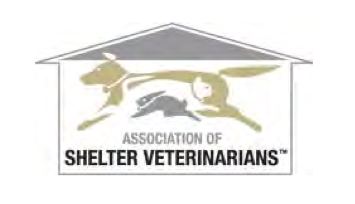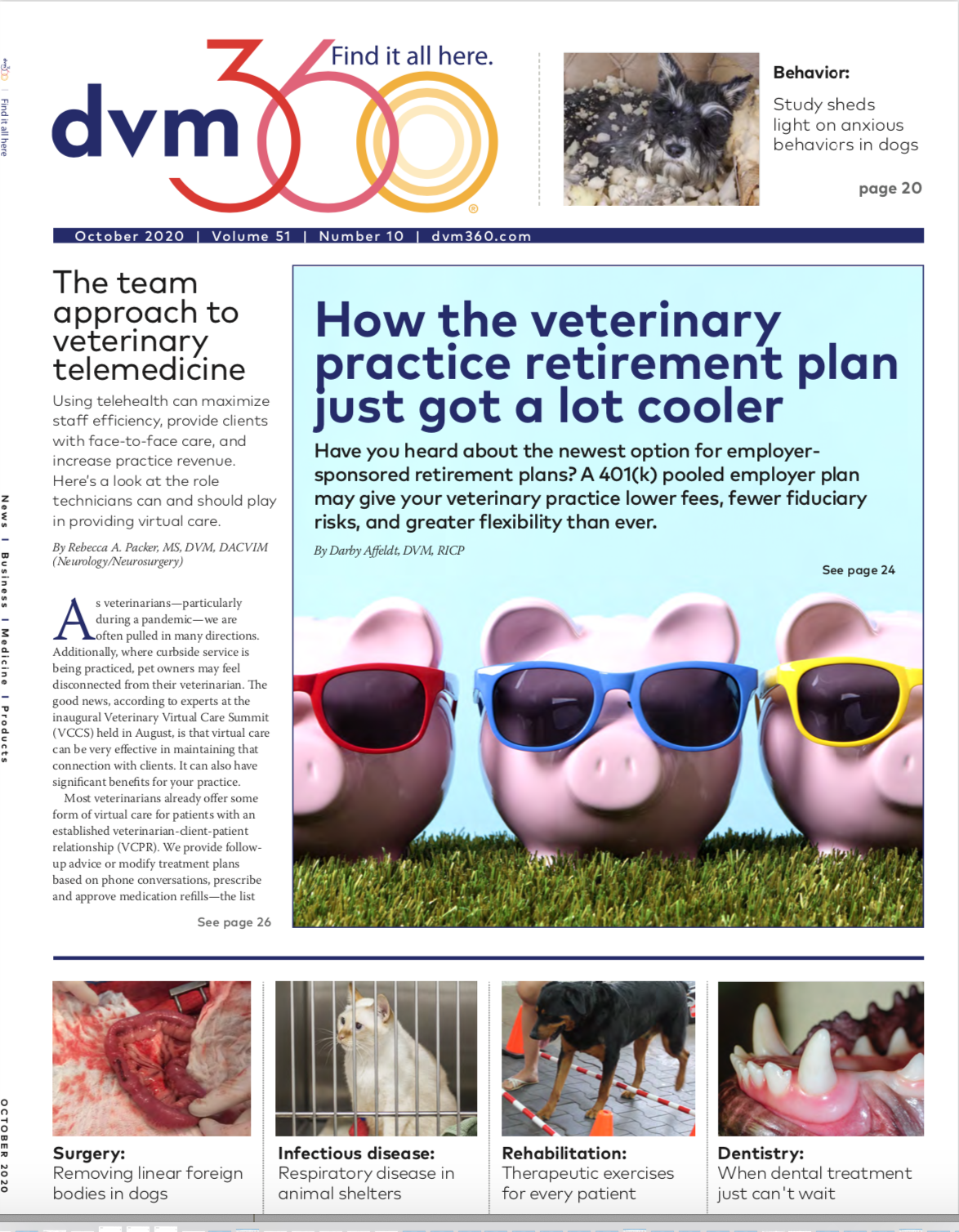Shelter Snapshot: Infectious respiratory disease in animal shelters
The widening geography of pet travel has increased an already significant problem in animal shelters and other veterinary facilities that house commingled animals. Here’s the latest.

Respiratory disease outbreaks are a major issue in animal shelters, primarily due to the ease of spread and the constraints often imposed by a shelter setting. The potential spread of respiratory disease in boarding, training, and other veterinary facilities can be distressing not only to clients whose pets may have been exposed but also to facility owners and staff.
Pathogens with extended shedding times, as well as novel pathogens, are concerning in veterinary medicine. The relative ease of pet transport within the United States and from foreign countries increases the potential for exposure of foreign animal diseases to pets and wildlife within the United States and bordering countries. Transport exposure was demonstrated recently by the diagnosis of the Asia-1 strain of canine distemper virus (CDV) in a young dog imported from South Korea into western Canada.1
To decrease the spread of respiratory disease in this manner, policies and procedures regarding quarantine timelines and diagnostic testing for pathogens of veterinary importance on all new imports must be created and implemented.
Vaccines: The core preventive measure
Feline upper respiratory infection (FURI) and canine infectious respiratory disease CIRD) are common in shelters and community pets in the United States. Vaccinations targeting respiratory viruses and Bordetella bronchiseptica are core preventive measures to reduce disease in at-risk populations, including those in animal shelters, boarding facilities, and dog parks. The pathogens included in canine vaccination protocols include CDV, canine parainfluenza virus, canine adenovirus-2, and B bronchiseptica. Additional vaccines in areas at high risk for exposure include canine influenza viruses H3N8 and H3N2.
Novel respiratory pathogens in dogs for which no vaccination is currently available include canine respiratory coronavirus, canine pneumovirus, Streptococcus equi zooepidemicus, and Mycoplasma cynos.2 Novel respiratory pathogens in cats with no current available vaccination include Mycoplasma felis and S equi zooepidemicus.3
In addition, an array of other bacterial organisms may be associated with upper and lower respiratory tract disease, including Pasteurella multocida, Klebsiella pneumoniae, Escherichia coli, Staphylococcus species, and Streptococcus species, among others.4
Challenges to identifying pathogens
It is difficult to distinguish the causative pathogens of respiratory disease because clinical signs are often similar regardless of pathogen. The consensus is that respiratory disease is usually initiated by viral pathogens, with bacterial organisms causing secondary infections.
The most common clinical signs of CIRD include acute onset of fever, cough, nasal discharge (clear initially unless complicated by secondary bacterial pathogens), and ocular discharge (transient depending on the pathogen). Clinical signs that affect several organ systems (respiratory system, gastrointestinal tract, dermatologic system, neurologic system, ocular system, and urogenital tract) strongly suggest CDV. Common signs of FURI include acute onset of fever, sneezing, nasal and ocular discharge, corneal ulcers, oral ulcers, and conjunctivitis.
Why diagnostic testing is so important
Diagnostic testing is essential to identify pathogens of concern in animals with clinical signs of upper respiratory disease. Pathogen identification assists the veterinarian with isolating clinical and exposed cases, as well as determining the optimal minimal quarantine period. If new cases continue to arise within a facility, it is important to reset the quarantine period back to zero.
The diagnostic method of choice for upper respiratory disease is polymerase chain reaction (PCR) testing.5-7 Most commercial veterinary laboratories offer comprehensive respiratory PCR panels. Not all laboratories test for all pathogens, however, so it is best to communicate your concerns with the laboratory prior to sample submission.
Many US animal shelters identify a low level, or baseline, number of CIRD or FURI cases. Whenever an unusual number of respiratory disease cases or increased cases above baseline are noted in community pets, respiratory PCR testing is recommended. Prolonged duration of illness over what is expected and progression of respiratory cases to severe respiratory disease also merit testing.
PCR testing is noninvasive and easy to perform, and most results are available quickly. Sampling can be performed on nasal, pharyngeal, or conjunctival mucosa. It is important to consider the effects of intranasal and oral vaccinations on testing, as false-positive results may occur. The PCR panel does not distinguish between vaccine and wild-type strains either for these pathogens or for CDV. However, a quantitative CDV PCR value can assist in making this distinction.
My PCR testing protocol
I use a wood-handled swab, although cotton, plastic, and other synthetic swabs are
also good options. I swab the conjunctiva and oropharynx and submit the swabs in a sterile vial without preservative. I recommend checking with your diagnostic laboratory to ensure that no additional measures are required for submission.
To determine the causative primary pathogen(s), testing should be performed on a subset of clinically affected and exposed animals before antibiotics are administered and within 3 to 5 days of clinical signs. Most pathogens shed for less than 2 weeks. However, prolonged shedding occurs with CDV, canine influenza virus H3N2, B bronchiseptica, Mycoplasma species, Chlamydophila, and S zooepidemicus.8 Repeat PCR testing is recommended with CDV due to the prolonged shedding period.8
Treatment strategies and prognosis
Treatment of CIRD and FURI is supportive, with close monitoring for the development of secondary infections or pneumonia. The use of antimicrobials should be limited to dogs and cats with signs of upper respiratory infection and fever, lethargy, and inappetence.9 Mucopurulent nasal discharge may resolve with time if a normal appetite and attitude are maintained.
Guidelines established in 2017 by the International Society for Companion Animal Infectious Diseases outline the appropriate use of antimicrobials to treat respiratory disease.9 Although these guidelines help determine the most effective use of antibiotics, organizations that house a large number of commingled dogs and cats may need to start antibiotic use in animals with a normal attitude and appetite to reduce the spread and progression of disease. Risk factors for CIRD and FURI outbreaks and recur- rent disease in commingling situations include overcrowding, cohousing, lengthy residence stays, improper cleaning and disinfection procedures, and poor ventilation. Proper policies and procedures that address planning, halting the spread of disease, diagnosing the pathogen(s), assessing the level of risk for the facility and the individual animals, and managing the situation will assist with recovering from CIRD and FURI outbreaks.
The prognosis for recovery is excellent in most cases of CIRD and FURI. Many cases are self-limited or responsive to treatment, typically with rapid resolution of clinical signs. Some of the challenging pathogens that require a prompt response by the veterinarian include S zooepidemicus, canine influenza virus H3N2, CDV, and canine pneumovirus

Shelter Snapshot is a collaborative column between the Association of Shelter Veterinarians (ASV) and dvm360.com to help inform veterinarians and team members involved in veterinary shelter medicine and in related aspects of veterinary general practice.
To learn more about the ASV and to find more information on these and other animal sheltering terms, visit sheltervet.org.
Nicole Ferguson-Morrison, DVM, practices at Lee County Domestic Animal Services in Fort Myers, Florida. She is an at-large board member for the Association of Shelter Veterinarians.
References
- Waldron P. New strain of canine distemper virus arrives in North America. Cornell Chronicle. Published March 25, 2019. Accessed September 12, 2019. http://news. cornell.edu/stories/2019/03/ new-strain-canine-distemper-virus- arrives-north-america
- Priestnall SL, Mitchell JA, Walker CA, Erles K, Brownlie J. New and emerging pathogens in canine infectious respiratory disease. Vet Pathol. 2014;51(2):492-504. doi:10.1177/0300985813511130
- Holst BS, Hanas S, Berndtsson LT, et al. Causes for feline upper respiratory tract disease—a case- control study. J Feline Med Surg. 2010;12(10):783-789. doi:10.1016/j. jfms.2010.06.002
- McManus CM, Levy JK, Andersen LA, et al. Prevalence of upper respi- ratory pathogens in four manage- ment models for unowned cats in the Southeast United States. Vet J. 2014;201(2):196-201. doi:10.1016/j. tvjl.2014.05.015
- Schulz BS, Kurz S, Weber K, Balzer H-J, Hartmann K. Detection of respiratory viruses and Bordetella bronchiseptica in dogs with acute respiratory tract infections. Vet J. 2014;201(3):365-369. doi:10.1016/j. tvjl.2014.04.019
- Schulz C, Hartmann K, Mueller RS, Helps C, Schulz BS. Sampling sites for detection of feline herpesvirus-1, feline calicivirus and Chlamydia felis in cats with feline upper respiratory tract disease. J Feline Med Surg. 2015;17(12):1012-1019. doi:10.1177/1098612X15569615
- Veir JK, Ruch-Gallie R, Spindel ME, Lappin MR. Prevalence of selected infectious organisms and compar- ison of two anatomic sampling sites in shelter cats with upper respiratory tract disease. J Feline Med Surg. 2008;10(6):551-557. doi:10.1016/j.jfms.2008.04.002
- Newbury S, Godhardt-Cooper J, Poulsen KP, Cigel F, Balanoff L, Toohey-Kurth K. Prolonged intermittent virus shedding during an outbreak of canine influenza A H3N2 virus infection in dogs in three Chicago area shelters: 16 cases (March to May 2015). J Am Vet Med Assoc. 2016;248(9):1022-1026. doi:10.2460/javma.248.9.1022
- Lappin MR, Blondeau J, Boothe D, et al. Antimicrobial use guide- lines for treatment of respiratory tract disease in dogs and cats: Antimicrobial Guidelines Working Group of the International Society for Companion Animal Infectious Diseases. J Vet Intern Med. 2017;31(2):279-294. doi:10.1111/ jvim.14627
